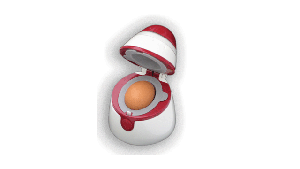Man-made life is a thing of fiction, relegated to things like Frankenstein. But scientists are coming close to something almost like it. New light-affected crystals developed by scientists at New York University are very close to being alive, so close it makes you question what "being alive" really means.
The crystals are microscopic cubes of hematite that can conduct electricity under certain wavelengths of blue light. As a result, when they're in a hydrogen peroxide soup, the right light can make them swim around, merging into larger crystals, breaking apart, and doing it all again. And then, when the light goes out, they stop.
Paul Chaikin, one of the authors of the paper recently published in Science, notes that this gives the little things metabolism and mobility, two of the criteria required to be considered "alive." They just happen to lack the ability to reproduce, for now. Another of the authors, Jérémie Palacci, put it this way to Wired:
[We] show that with a simple, synthetic active system, we can reproduce some features of living systems. I do not think this makes our systems alive, but it stresses the fact that the limit between the two is somewhat arbitrary.
There's nothing really to suggest that these crystals might suddenly learn to replicate, but they do provide something of a window back in time, when the building blocks of life may have been quite similar to this, before they began to multiply and become actual life. In the meantime, Chaikin and Palacci are working on a different particle that has metabolism and can replicate, but not move. If these two projects manage to learn from each other, we could be in for something really wild.
More here.
















































